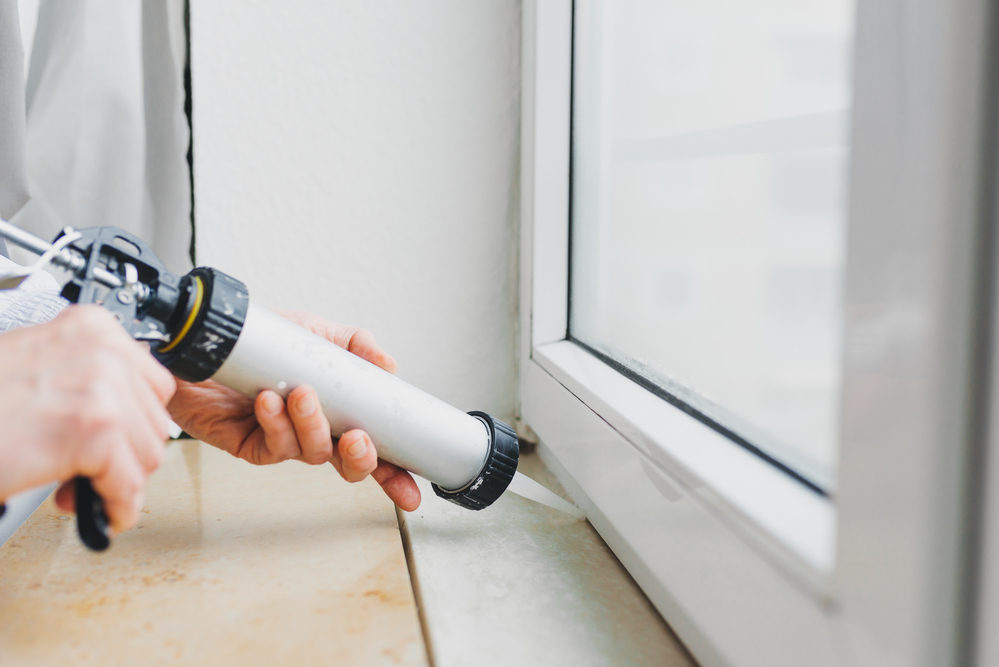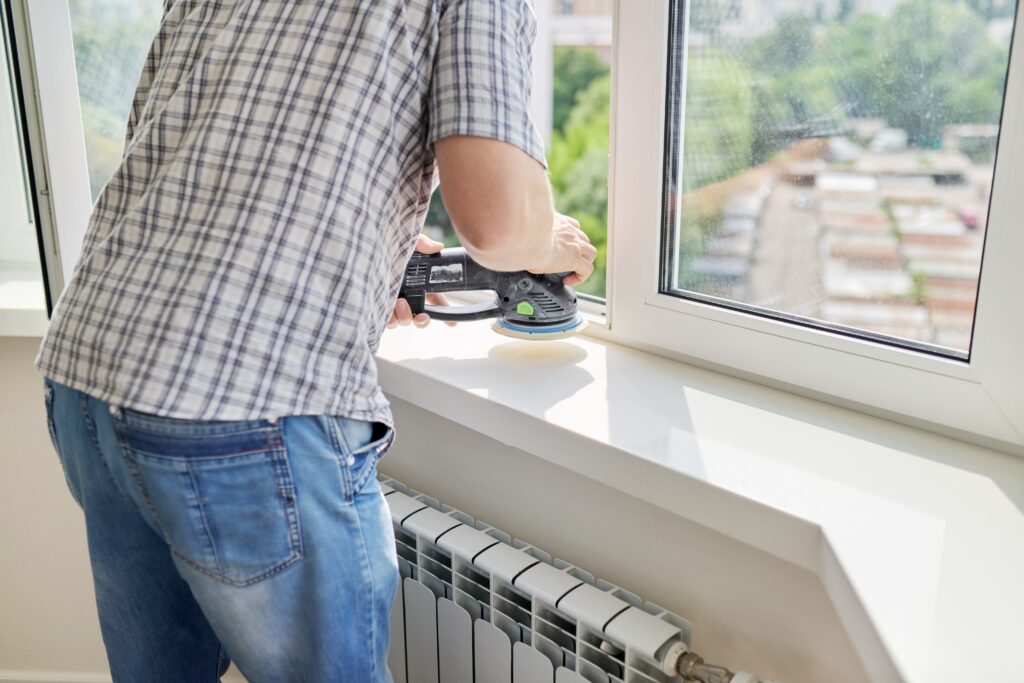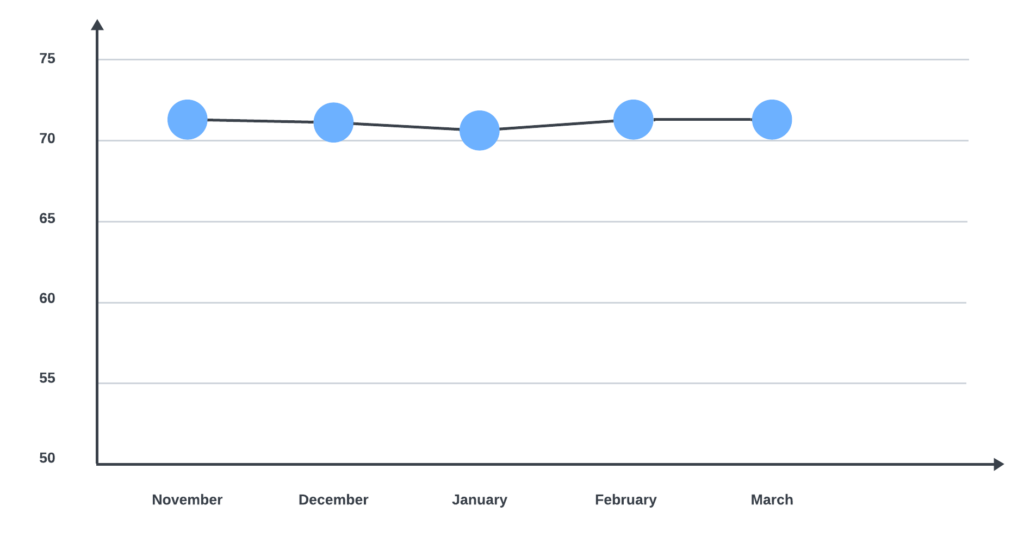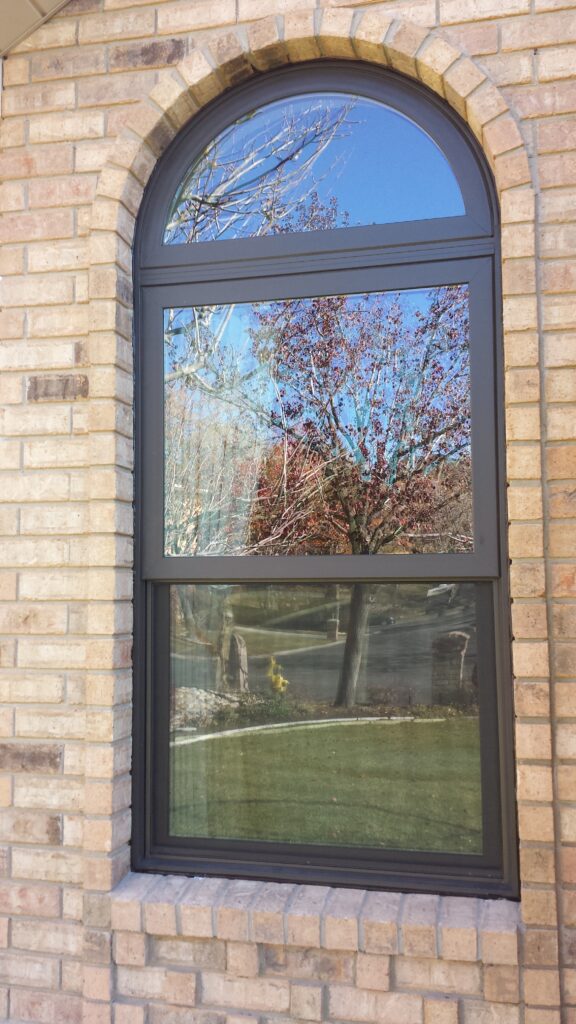Replacing basement windows is an essential aspect of home maintenance that homeowners often overlook. Basement windows play a critical role in ensuring proper ventilation, preventing moisture buildup, and enhancing home security. However, like all parts of a home, these windows wear out and need replacement. Understanding the costs involved in this process is crucial for effective budgeting and decision-making.
The average cost across the nation for replacing a basement window typically ranges from $500 to $1,000. Most homeowners spend about $750 for a prefabricated, medium-sized, egress sliding basement window that features a vinyl frame.

What’s Inside
- Factors Affecting Replacement Costs
- Size and Style of Windows
- Material Choices
- Glass Options
- Labor Costs
- Pre-Installation Considerations
- The Installation Process
- Additional Costs Post-Installation
- Cost-Saving Strategies
- Long-Term Financial Considerations
- Real-Life Cost Breakdowns and Case Studies
- Conclusion
- Frequently Asked Questions (FAQs) about Basement Window Replacement
The cost of replacing basement windows varies widely, depending on several factors including the size and style of the windows, the materials used, and the complexity of the installation process. This guide aims to provide a detailed breakdown of these costs, offering insights into what homeowners can expect to spend. For those seeking professional advice or a tailored quote, UT Window Experts offer comprehensive services that cater to a range of needs and preferences.
In the following sections, we will explore the various elements that contribute to the cost of basement window replacement, including material choices, labor costs, and any additional expenses that may arise during the process. Our goal is to equip you with the knowledge necessary to make an informed decision when replacing your basement windows.
Factors Affecting Replacement Costs
When considering the replacement of basement windows, several key factors will influence the overall cost. Understanding these factors can help homeowners budget more accurately and choose options that best fit their needs and financial constraints.
Size and Style of Windows
The size and style of basement windows are primary determinants of cost. Standard-sized windows are generally more affordable than custom-sized ones, as they are readily available and require less labor to install. The style of the window also plays a significant role. For example, simple fixed windows are typically less expensive than more complex designs like hopper or sliding windows. Homeowners in Utah can explore a variety of sizes and styles suitable for their homes by visiting Basement Window Replacement in Utah.
Price table comparison by size
| 2020 | $150 – $250 |
| 3030 | $200 – $300 |
| 4040 | $250 – $350 |
| 5050 | $300 – $450 |
| 6060 | $350 – $550 |
Material Choices
The material of the window frame significantly impacts the cost. Common materials include vinyl, wood, and aluminum. Vinyl is a popular choice due to its affordability and low maintenance requirements. Wood, while offering a classic aesthetic, tends to be more expensive and requires more upkeep. Aluminum frames are durable and resistant to rust, making them a good middle-ground option. Each material comes with its own set of pros and cons, influencing not just the upfront cost but also long-term maintenance expenses. Read an article by Architectural Digest Here comparing wood windows versus vinyl.
Price table comparison by material
| Vinyl | $150 – $300 |
| Wood | $300 – $600 |
| Fiberglass | $250 – $500 |
Glass Options
The type of glass used in basement windows affects both the cost and energy efficiency of the home. Single-pane glass is the most affordable but offers the least insulation. Double-pane and triple-pane glasses, while more expensive upfront, provide better insulation, which can lead to energy savings over time. Additionally, options like energy-efficient coatings and inert gas fills between panes can further enhance insulation but also add to the cost. Read a case study we conducted on Low E Glass Here!
Glass price comparison table
| Double Pane | $50 – $100 |
| Single Pane | $0 |
| Tempered Glass | $40 – $80 |
| Argon Gas | $20 – $50 |
| Triple Pane | $100 – $200 |
Labor Costs
Labor costs can vary significantly based on the region and the complexity of the installation. In areas with higher living costs, labor rates tend to be higher. The complexity of the window design and the difficulty of installation (such as working in tight or hard-to-reach spaces) can also increase labor costs. Choosing a local expert like UT Window Experts can be beneficial, as they have a better understanding of regional pricing and installation challenges.
Labor Price Comparison Table
| Basic Replacement (same size) | $100 – $300 |
| New Installation (new opening) | $150 – $500 |
| Installation with Framing Adjustments | $200 – $600 |
| Installation in High or Hard-to-Reach Areas | $250 – $700 |
| Historic Home Window Installation (requiring custom work) | $300 – $800 |

Pre-Installation Considerations
Before the actual installation of basement windows begins, there are several preparatory steps and associated costs that homeowners should consider. These initial expenses can significantly impact the overall budget for the project.
Assessment and Measurement
The first step in the replacement process is having a professional assess the condition of the existing windows and take precise measurements. This assessment ensures that the new windows fit perfectly, avoiding any future issues with installation or performance. Companies like UT Window Experts offer this service for free, but some companies will charge a fee which should be factored into the overall cost.
Permits
Depending on the location and scope of the work, homeowners may need to obtain permits from local authorities. The cost of these permits varies by region and the complexity of the project. It’s crucial to research and include these expenses in the budget to avoid any legal complications. Check your local government site such as SLC.gov for region specific rules.
Preparatory Work
In some cases, preparing the area for new window installation may incur additional costs. This can include removing obstructions, repairing or altering the existing window frame, or addressing any water damage or mold issues. These preparatory steps are essential for ensuring a smooth and successful installation process.

The Installation Process
The actual installation of basement windows is a multi-step process, each contributing to the total cost.
Removal of Old Windows
The first step is the removal of the existing windows. This process must be done carefully to avoid damaging the surrounding walls or structures. The complexity and time required for this step can vary, impacting labor costs.
Installation of New Windows
Once the old windows are removed, the new ones are installed. This process involves securing the windows in place, ensuring they are level and properly sealed. The installation method may vary depending on the window type and the condition of the basement walls.
Insulation and Sealing
Proper insulation and sealing are crucial for energy efficiency and preventing moisture ingress. This step involves adding insulation around the window frame and applying sealants. Materials and labor for insulation and sealing are additional costs to consider.
Final Checks and Clean-up
After installation, the contractor will perform final checks to ensure everything is functioning correctly. This is followed by clean-up of the work area. While some companies include clean-up in their service, others may charge extra.
Throughout the installation process, unexpected challenges can arise, such as discovering hidden structural issues, which can affect the final cost. Consulting with professionals like those at UT Window Experts can provide a more accurate estimate and help mitigate unforeseen expenses.
In the following sections, we will explore the additional costs that may occur post-installation, strategies to save on these expenses, and the long-term financial considerations of basement window replacement.
Additional Costs Post-Installation
After the installation of the basement windows, there are potential additional expenses that homeowners should be aware of:
Finishing and Trim Work
Once the new windows are installed, finishing touches may be required to ensure a seamless look with the rest of the basement. This can include interior and exterior trim work, painting, or staining. The cost for these finishing touches will vary based on the materials used and the extent of the work needed.
Repairs to Surrounding Areas
Installation might sometimes cause minor damage to the surrounding areas, such as walls, window sills, or exterior landscaping. Repairing and restoring these areas to their original state can add to the overall cost.
Disposal of Old Windows
The proper disposal of the old windows is another factor to consider. Some companies may offer removal services, but there could be an additional charge for this service.
Cost-Saving Strategies
While basement window replacement can be a significant investment, there are several ways to manage and reduce costs:
Choosing the Right Time for Installation
Prices and availability of contractors can vary throughout the year. Scheduling your project during off-peak seasons can lead to better deals and more flexible scheduling options.
Comparing Quotes
It’s advisable to get multiple quotes from different contractors to compare prices and services. Sites like UT Window Experts offer free quotes, which can be a great starting point.
Bulk Purchase Discounts
If multiple windows are being replaced, homeowners can often negotiate a discount for bulk purchases.
DIY vs. Professional Installation
For those who are handy, DIY installation can save on labor costs. However, it’s important to weigh the potential savings against the risk of incorrect installation, which can lead to more expenses in the long run.

Long-Term Financial Considerations
Investing in high-quality basement windows can have long-term financial benefits:
Energy Efficiency
Energy-efficient windows can lead to significant savings on heating and cooling costs. While they may cost more upfront, the reduction in utility bills can make them more cost-effective over time.
Property Value
Quality window replacements can enhance the overall value of a property. Prospective buyers often value homes with newly installed, efficient windows.
Maintenance Costs
Choosing durable, low-maintenance materials can reduce long-term care and repair costs, providing savings over the lifespan of the windows.
Average Temperature Indoor with Low E Windows During Winter (thermostat set to 72)

Real-Life Cost Breakdowns and Case Studies
To provide a practical perspective on basement window replacement costs, this section features real-life scenarios and case studies. These examples demonstrate how various factors influence the final cost.
Standard Replacement Scenario
In Highland, Utah, a homeowner approached our company for the replacement of three basement windows. The project involved removing old, inefficient windows and installing new sliding windows to enhance the basement’s functionality and aesthetic appeal.
Client’s Requirements:
- Replacement of three outdated basement windows.
- Installation of sliding windows for ease of use and improved ventilation.
- A desire for durable, energy-efficient windows within a moderate budget.
Project Execution:
- Initial Consultation and Assessment:
- Our team visited the site to assess the existing windows and discuss the client’s specific needs and preferences.
- Measurements were taken to ensure a perfect fit for the new windows.
- Window Selection:
- Based on the client’s requirements, we suggested medium-sized sliding windows with a vinyl frame, known for their durability and low maintenance.
- The client approved our recommendation, valuing the blend of functionality, energy efficiency, and aesthetics.
- Removal of Old Windows:
- Our skilled technicians carefully removed the old windows, ensuring minimal disruption to the surrounding structure.
- The removal process was meticulously planned to prevent any damage to the basement interior.
- Installation of New Windows:
- The new sliding windows were installed with precision.
- We ensured proper sealing and insulation to enhance energy efficiency.
- A thorough check was performed post-installation to confirm the windows operated smoothly and met our quality standards.
- Finishing Touches:
- The surrounding areas were patched and painted to match the existing interior.
- A final inspection was conducted to ensure the work’s integrity and cleanliness.
Project Outcome:
- Enhanced Aesthetics and Functionality:
- The new windows transformed the basement’s appearance, making it brighter and more inviting.
- The sliding function provided ease of use and improved ventilation, a significant upgrade from the old windows.
- Energy Efficiency:
- The vinyl frames and quality glass contributed to better insulation, promising energy savings in the long run.
- Client Satisfaction:
- The client was delighted with the final look and functionality of the windows.
- They appreciated the smooth process and the professional conduct of our team.
Final Cost:
- The total cost of the project, including the windows, installation, and finishing work, came to $1,800. This cost aligned with the client’s budget and expectations for the quality and scope of the work provided.

Custom Replacement Scenario
A homeowner in Park City, Utah, sought to upgrade their residence with 5 new high-energy-efficient windows. The project involved replacing existing standard windows with advanced options featuring Low-E Max glass and argon gas filling. The client’s primary goal was to enhance energy efficiency while also improving the overall aesthetic and value of their home.
Client’s Requirements:
- Replacement of existing windows with advanced energy-efficient options.
- Incorporation of Low-E Max glass and argon gas for superior insulation and efficiency.
- A focus on long-term savings through reduced energy costs.
Project Execution:
- Initial Consultation and Planning:
- Our team conducted an in-depth consultation to understand the client’s specific needs and energy-saving goals.
- Measurements and assessments of the current windows were performed to plan for the precise specifications required for the new installations.
- Selection of High-Efficiency Windows:
- The client was presented with a range of window options featuring Low-E Max glass, known for its exceptional thermal performance.
- We recommended windows with argon gas filling to further enhance insulation and reduce heat transfer.
- Removal of Old Windows:
- The removal of the existing windows was conducted with careful consideration to prevent damage to the property.
- Special attention was given to maintaining the integrity of the home’s structure during removal.
- Installation of New Windows:
- The new energy-efficient windows were installed meticulously, ensuring a perfect fit and optimal performance.
- Our team ensured that each window was properly sealed and insulated to maximize energy efficiency.
- Post-Installation Inspection and Testing:
- A comprehensive inspection was carried out to ensure the windows’ proper installation and performance.
- Testing was conducted to verify the energy efficiency improvements, confirming the effectiveness of the Low-E Max glass and argon gas.
Project Challenges:
- The project required detailed planning and precision due to the complex nature of the high-efficiency windows.
- Ensuring the new windows blended seamlessly with the home’s existing aesthetic was crucial.
Project Outcome:
- Enhanced Energy Efficiency:
- The installation significantly improved the home’s thermal efficiency, leading to noticeable reductions in energy costs.
- The Low-E Max glass and argon gas filling provided superior insulation compared to standard windows.
- Improved Home Comfort and Aesthetics:
- The windows not only enhanced the home’s energy performance but also its overall look, adding to the property’s curb appeal.
- Client Satisfaction:
- The client expressed high satisfaction with the results, particularly appreciating the noticeable improvement in home comfort and the potential for long-term energy savings.
Final Cost:
- Reflecting the complexity and advanced features of the windows, the total cost of the project was $4,500. This cost was deemed a worthwhile investment by the client, considering the long-term energy savings and property value enhancement.

Conclusion
In conclusion, replacing basement windows is an investment that involves several considerations, including the type of windows, material choices, installation complexities, and additional post-installation costs. While the initial expense can be significant, choosing the right windows and installation service can lead to long-term savings and increased property value.
Homeowners are encouraged to consult with window replacement experts, like those at UT Window Experts, for personalized advice and detailed quotes. Proper planning and understanding of the involved costs can ensure a successful and cost-effective basement window replacement project.
Frequently Asked Questions (FAQs) about Basement Window Replacement
Is it worth replacing basement windows?
Absolutely. Replacing basement windows is a valuable investment for several reasons. It enhances your home’s energy efficiency, improves security, increases natural light, and can significantly boost your property’s overall value. Moreover, new windows can prevent moisture and mold issues common in basements, ensuring a healthier living environment.
How to replace old basement windows?
Replacing old basement windows involves several steps. First, you need to accurately measure the existing window space. Next, remove the old window carefully to avoid damage to the surrounding area. Choose the appropriate replacement window that fits your measurements and requirements. Install the new window, ensuring it’s properly sealed and insulated. Lastly, finish with any necessary trim work. For detailed guidance, refer to home improvement resources like “This Old House,” which provide step-by-step instructions for such projects.
What are basement windows called?
Basement windows are often referred to as “hopper windows” when they are designed to open inward from the top. Another common type is the “sliding window,” which opens horizontally. The specific term can vary based on the style and function of the window. For example, if a basement window is designed for emergency exits or to provide a means of escape, it’s typically called an “egress window.”
Is it worth adding an egress window to a basement?
Yes, adding an egress window to a basement is generally worth the investment. Egress windows provide a safe exit in case of emergencies, which is a critical safety feature, especially for basements used as living spaces. Additionally, they allow more natural light into the basement, making the space more pleasant and habitable. From a real estate perspective, installing an egress window can increase the value of your home and expand the legally livable square footage, as many building codes require them for bedrooms and certain living spaces in basements.